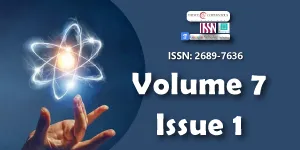Study of vibration shock processes of non-linear mechanical systems with distributed parameters
Main Article Content
Abstract
In practice, under the conditions of perfection and constructive development of modern equipment and machines, nonlinear mechanical systems with distributed parameters are often encountered, which, depending on the principles of operation, are affected by vibration shock. Therefore, the study of vibration shock processes of the mentioned systems has great theoretical and practical importance and as a result to determine the optimal parameters of vibration protection devices to ensure their safe operation. In our case, the displacement field of two interacting non-linear mechanical systems with distributed parameters is considered, when their interaction is of vibration shock nature. Obviously, the mentioned events are more pronounced when the self-oscillation frequency of one or both systems momentarily approaches the frequency of forced vibration shock processes. In addition, critical moments are fixed during the phase shifts of forced oscillations of oscillatory systems, in this case, the frequencies of forced oscillations approach mutually opposing phase moments. By choosing the optimal parameters of hysteresis losses, it is possible to almost exclude sub-harmonic modes superimposed on the main resonance modes in vibration shock processes.
During hysteresis losses of the parabolic type, the value of µ changes automatically in connection with impulsive loads, which will allow us to transfer the vibration shock processes to automatic modes and, accordingly, the practically safe operation of the mentioned systems.
Downloads
Article Details
Copyright (c) 2024 Gavasheli L, et al.

This work is licensed under a Creative Commons Attribution 4.0 International License.
Licensing and protecting the author rights is the central aim and core of the publishing business. Peertechz dedicates itself in making it easier for people to share and build upon the work of others while maintaining consistency with the rules of copyright. Peertechz licensing terms are formulated to facilitate reuse of the manuscripts published in journals to take maximum advantage of Open Access publication and for the purpose of disseminating knowledge.
We support 'libre' open access, which defines Open Access in true terms as free of charge online access along with usage rights. The usage rights are granted through the use of specific Creative Commons license.
Peertechz accomplice with- [CC BY 4.0]
Explanation
'CC' stands for Creative Commons license. 'BY' symbolizes that users have provided attribution to the creator that the published manuscripts can be used or shared. This license allows for redistribution, commercial and non-commercial, as long as it is passed along unchanged and in whole, with credit to the author.
Please take in notification that Creative Commons user licenses are non-revocable. We recommend authors to check if their funding body requires a specific license.
With this license, the authors are allowed that after publishing with Peertechz, they can share their research by posting a free draft copy of their article to any repository or website.
'CC BY' license observance:
|
License Name |
Permission to read and download |
Permission to display in a repository |
Permission to translate |
Commercial uses of manuscript |
|
CC BY 4.0 |
Yes |
Yes |
Yes |
Yes |
The authors please note that Creative Commons license is focused on making creative works available for discovery and reuse. Creative Commons licenses provide an alternative to standard copyrights, allowing authors to specify ways that their works can be used without having to grant permission for each individual request. Others who want to reserve all of their rights under copyright law should not use CC licenses.
Gavasheli LSh. Theory of vibration protection of nonlinear mechanical systems. Metsniereba, Tbilisi. 2006; 272.
Gavasheli L, Gavasheli A. Random oscillations of nonlinear systems with distributed Parameter. Ann Math Phys 4(1): 084-091. 2021; DOI https://dx.doi.org/10.17352/amp.000027
Li H, Dai F, Du S. Broadband energy harvesting by exploiting nonlinear oscillations around the second vibration mode of a rectangular piezoelectric bistable laminate. Smart Mater Struct. 2015; 24.
Mahmoudi S, Kacem N, Bouhaddi N. Enhancement of the performance of a hybrid nonlinear vibration energy harvester based on piezoelectric and electromagnetic transductions. Smart Mater Struct. 2014; 23: 075024.
Feng JQ, Xu W, Niu YJ. Chattering bifurcations in a Duffing unilateral vibro-impact system. Acta Phys Sin. 2010; 59: 157–163.
Li F, Ding WC. Analysis of sticking motion in a vibro-impact system with multiple constraints. J Vib Shock. 2010; 29: 150–156.
Zhang H, Ding WC, Li F. Dynamics of a two-degree-of-freedom impact system with clearance and pre-compressed spring. Eng Mech. 2011; 28: 209–217.
Su F, Wang CS. Chaos evolution of two-degree-of-freedom impact system with unilateral rigid constraints. Mech Res Appl. 2012; 4: 69-71.

